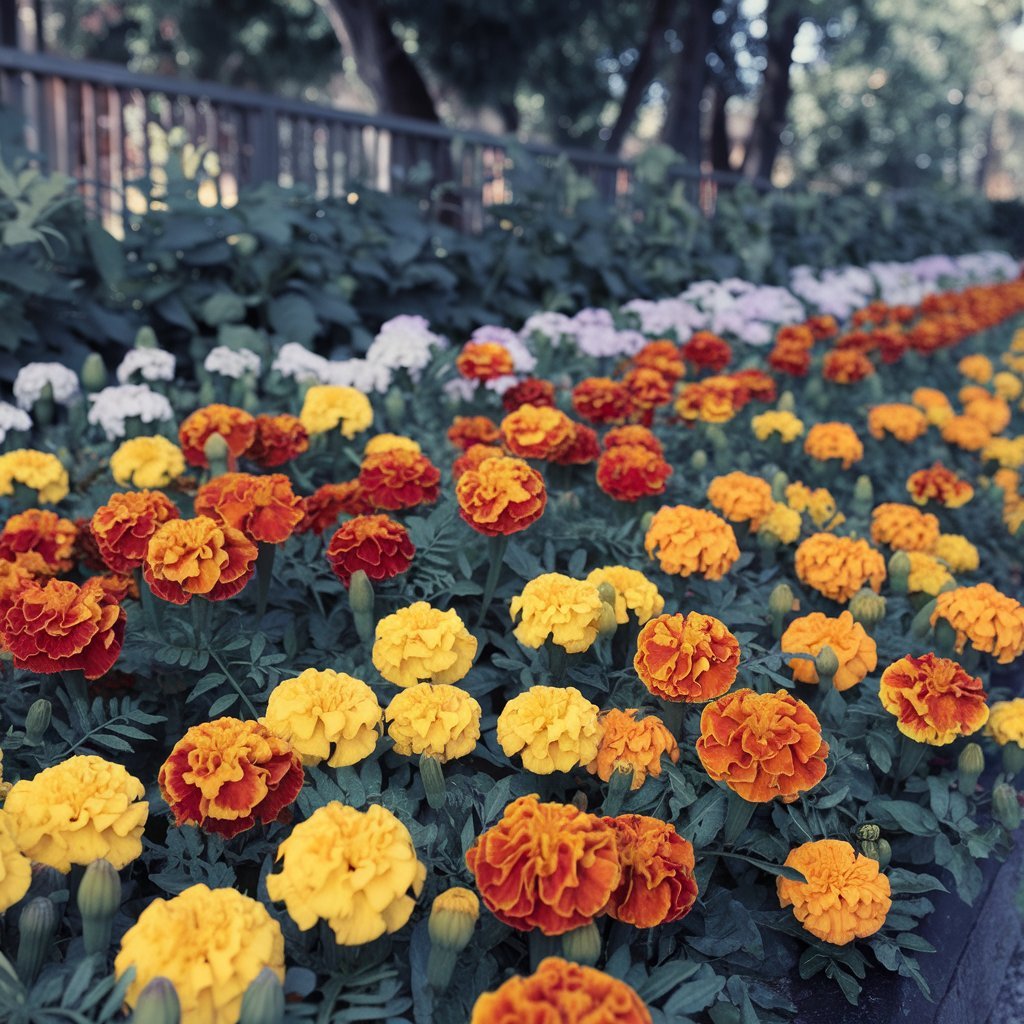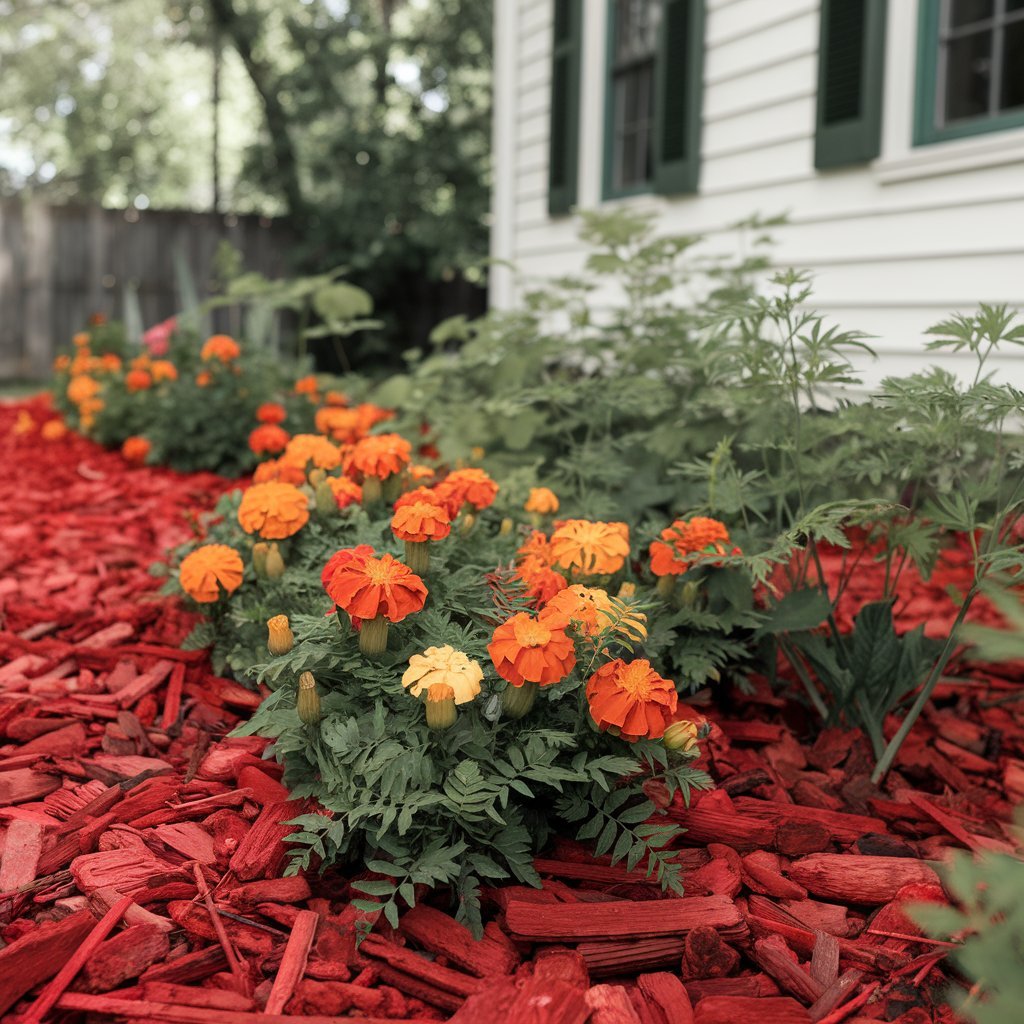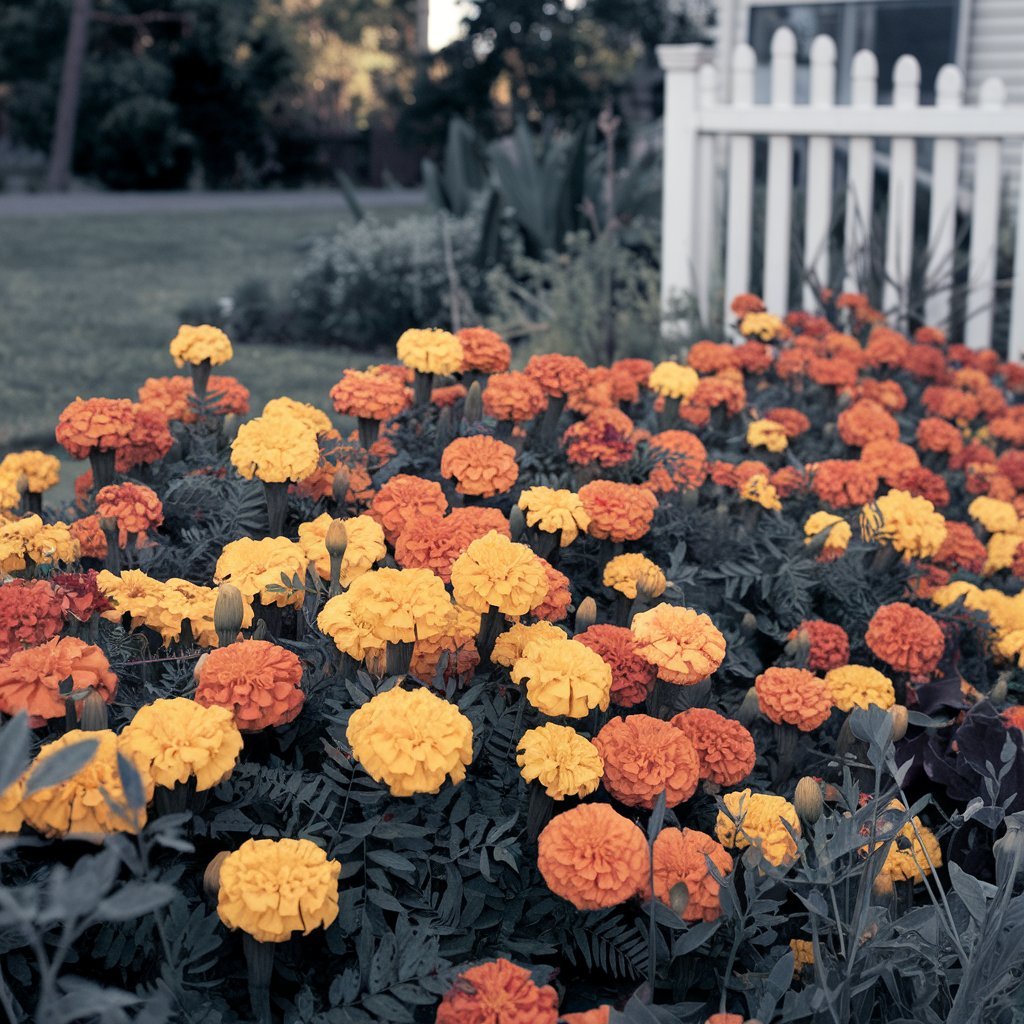Creating a Chill Garden
When I decided to set up my own low-maintenance garden, I was all about having a gorgeous outdoor space without the constant fuss. By sticking to easy-peasy gardening tricks and throwing in some marigolds, I found I could kick back and enjoy my garden more. Let’s check out why a low-maintenance garden rocks and how to make one.
Why Low-Maintenance Gardens Are Awesome
Low-maintenance gardens are a game-changer for anyone wanting to keep things simple. Here’s why they’re so great:
- More Free Time: Less weeding, watering, and pruning means more time to relax and enjoy your garden.
- Save Money: Fewer gardening chores mean you spend less on water, fertilizers, and other supplies.
- Stress-Free: Knowing your garden can thrive with minimal effort makes it a chill hobby.
- Eco-Friendly: Using native plants and smart watering systems helps save water and supports local wildlife.
How to Design an Easy Garden
Creating a low-maintenance garden is all about smart design. Here’s what worked for me:
- Keep It Simple: Stick to clean lines and uncluttered spaces to make upkeep a breeze.
- Pick the Right Plants: Go for plants that love your local climate and soil, like marigolds, so they need less TLC.
- Standardize Stuff: Use common materials and consistent plant spacing to make things easier to manage.
- Divide and Conquer: Break your garden into sections so you can tackle one area at a time without messing up the whole thing.
- Make It Accessible: Ensure all parts of your garden are easy to reach for simple weeding, pruning, and watering.
By following these tips, I’ve got a garden that looks fab and is super easy to care for. For more ideas, check out our easy garden ideas and simple garden design articles.
In short, going low-maintenance has let me enjoy a beautiful, stress-free garden. By sticking to smart design principles and picking the right plants, anyone can create a stunning garden that’s a breeze to maintain.
| Principle | What It Means |
|---|---|
| Keep It Simple | Stick to clean, uncluttered designs to make maintenance easy. |
| Pick the Right Plants | Choose plants like marigolds that thrive locally and need minimal care. |
| Standardize Stuff | Use common materials and consistent spacing for easy management. |
| Divide and Conquer | Split the garden into sections to handle issues without disrupting everything. |
| Make It Accessible | Ensure all areas are easy to reach for simple maintenance tasks. |

For more tips on keeping your garden beautiful with minimal effort, check out our articles on easy-to-grow garden vegetables and easy garden hacks.
Mulching for Easy Garden Care
Gardening with marigolds can be a breeze, especially when you embrace the perks of mulching. Mulch not only makes your garden look good but also cuts down on the work. Let’s dig into the types of mulch and some handy mulching tips to make your gardening life easier.
Types of Mulch
Mulch is a layer of stuff you put on the soil to protect plants, keep moisture in, and stop weeds. Here are some common types you can use in your low-maintenance garden:
Organic Mulch
Organic mulches come from natural materials and break down over time, adding nutrients to the soil.
- Wood Chips/Bark: Looks nice and adds nutrients.
- Straw: Great for veggie gardens.
- Composted Leaves: Awesome for enriching the soil.
Inorganic Mulch
Inorganic mulches are made from stuff that doesn’t break down, perfect for a low-maintenance garden.
- Gravel/Stone: Tough and decorative, great for paths.
- Landscape Fabric: Keeps weeds down and holds moisture.
- Rubber Mulch: Lasts forever and good for playgrounds.
| Mulch Type | Benefits | Maintenance Level |
|---|---|---|
| Wood Chips | Adds nutrients, looks good | Medium |
| Gravel/Stone | Tough, holds moisture | Low |
| Landscape Fabric | Stops weeds, holds moisture | Low |
| Straw | Enriches soil, holds moisture | Medium |
| Rubber Mulch | Lasts long, low maintenance | Low |

Mulching Tips for Success
To get the most out of mulching, you gotta do it right. Here are some tips:
Timing: Put down mulch from late autumn to late winter (Nov-Feb) to protect from frost and help plants grow (Royal Horticultural Society).
Thickness: Make sure the mulch layer is at least 5cm (2in) thick to keep weeds down and hold moisture.
Preparation: Before mulching, pull out any weeds and water the soil. This helps the mulch keep the soil moist and weed-free.
Application: Spread the mulch evenly around plants, but keep it a few inches away from the plant bases to avoid rot and pests.
Maintenance: Organic mulches break down, so you’ll need to add more. Keep the layer about 2 inches deep and add more when it gets thin (Fine Gardening).
Mulching not only makes garden care easier but also helps your plants by keeping the soil cool, moist, and weed-free. It’s a smart move for creating and keeping low-maintenance gardens. For more tips on easy gardening, check out our articles on simple garden design and easy garden hacks.
By knowing the types of mulch and using these mulching tips, you can enjoy a beautiful, low-maintenance garden with marigolds and other easy-to-grow plants.
Plant Selection for Effortless Gardening
Creating a low-maintenance garden starts with picking the right plants. When I first aimed for an easy-care garden, I found that native plants and well-chosen trees made all the difference.
Native Plants for Low Maintenance
Native plants are my secret weapon for a hassle-free garden. They’re already used to the local climate and soil, so they need less water, fertilizer, and fuss than non-native plants (Royal Horticultural Society). Plus, they naturally fend off local pests and diseases, cutting down on the need for pesticides.
Here’s a quick list of native plants that are perfect for a low-maintenance garden:
| Plant Name | Water Needs | Pest Resistance | Soil Type |
|---|---|---|---|
| Black-Eyed Susan | Low | High | Well-drained |
| Purple Coneflower | Low | High | Sandy or loamy |
| Butterfly Weed | Low | High | Sandy |
| Switchgrass | Low to Medium | High | Clay or loamy |
These plants not only thrive with minimal care but also support local wildlife, making your garden a mini-ecosystem. For more easy garden ideas, starting with native plants is a no-brainer.
Choosing Trees for Small Gardens
Picking the right trees for small gardens is crucial. You want trees that won’t outgrow the space but still offer shade, beauty, and structure. Here are some of my top picks:
| Tree Name | Mature Height | Spread | Soil Type |
|---|---|---|---|
| Japanese Maple | 10-15 ft | 10-15 ft | Well-drained |
| Redbud | 20-30 ft | 25-35 ft | Moist, well-drained |
| Serviceberry | 15-25 ft | 15-25 ft | Moist, well-drained |
| Dwarf Birch | 10-15 ft | 10-15 ft | Moist, well-drained |
These trees are perfect for small spaces and need minimal pruning. They also add seasonal interest with their flowers, foliage, and sometimes berries. For more simple garden design tips, picking the right trees can make your garden both stunning and easy to care for.
Choosing the right plants and trees is the first step to a stress-free garden that you can enjoy without breaking a sweat. By focusing on native plants and trees that fit small spaces, you can keep your garden beautiful and low-maintenance. For more tips and tricks, check out my easy garden hacks to keep your garden thriving with minimal effort.
Weed Control Strategies
Keeping weeds out of your garden is key to having a low-maintenance space. Here are some practical ways to manage weeds naturally, using mulch and smart plant spacing.
Natural Weed Control Methods
Going natural with weed control is not just eco-friendly; it also makes your garden life easier. Here are some tried-and-true methods:
- Newspaper Method: Lay down several layers of newspaper in your garden beds and cover them with mulch. This keeps weeds away for the first season, and by the next Spring, the newspaper will start breaking down but still help (Joyfully Treasured).
- Organic Preen: Apply Organic Preen (like cornmeal gluten) in early Spring after adding a light layer of mulch. It stops new weeds from sprouting and adds nitrogen to the soil (Joyfully Treasured).
- Cardboard: Similar to the newspaper method, using cardboard as a base layer can keep weeds under control. This method can last up to three years before needing to be repeated but generally should be done every other year (Joyfully Treasured).
- Hand Weeding: Regular hand weeding can be therapeutic and is effective in small garden areas. Make sure to remove the entire root to prevent regrowth.
Mulch and Plant Spacing Techniques
Proper mulching and smart plant spacing are crucial for keeping weeds at bay. Here are some tips:
- Types of Mulch: Organic mulches like wood chips, straw, or shredded bark are great. They suppress weeds and improve soil health.
- Mulching Techniques: Apply a 2-3 inch layer of mulch around your plants, but don’t pile it against the stems. This keeps moisture in and stops weed seeds from sprouting.
- Plant Spacing: Plant your garden densely to shade out weeds and reduce their growing space. Use fast-spreading plants like marigolds, which are perfect for easy garden ideas.
- Landscaping Fabric: Use landscaping fabric if you don’t plant annuals or move plants around. It can be more trouble than it’s worth otherwise (Joyfully Treasured).
By using these natural weed control methods and effective mulching and plant spacing techniques, you can create a garden that’s both beautiful and easy to maintain. For more tips and tricks, check out our easy garden hacks.
| Method | Duration of Effectiveness | Benefits |
|---|---|---|
| Newspaper | 1-2 years | Suppresses weeds, adds organic matter |
| Organic Preen | Seasonal | Prevents new weed growth, feeds soil |
| Cardboard | 2-3 years | Long-lasting weed control, eco-friendly |
For more inspiration on creating a simple and low-maintenance garden, visit our article on simple garden design.
Embracing Nature in Garden Design
Creating a low-maintenance garden doesn’t mean you have to sacrifice beauty or biodiversity. You can design a garden that grows naturally and supports wildlife while keeping your workload light.
Letting Your Garden Grow Naturally
One of the best parts of low-maintenance gardening is watching your garden take on a life of its own. By working with the environment and picking plants that thrive on their own, you can save time and money. No need for constant soil tweaks or chemical fertilizers (In Our Nature).
Here’s my approach to letting the garden do its thing:
- Go with the Flow: Let plants grow and spread on their own, creating a self-sustaining garden.
- Pick Local Heroes: Native plants are already suited to your area’s climate and soil, making them easy to care for and tough.
- Skip the Big Clean-Up: Don’t go overboard with garden clean-ups. Leaving plants standing through winter gives wildlife a place to live and adds some winter charm.
Making Your Garden a Wildlife Haven
Your garden can be a beautiful retreat for you and a sanctuary for wildlife. With a few smart choices, you can support local biodiversity without adding to your workload.
- Leave Plants Be: Let plants stand through winter instead of clearing them out. This helps beneficial species by giving them homes and food (In Our Nature).
- Welcome the Bugs: Seeing caterpillars and other insects means your garden is healthy. These bugs are crucial food for birds (In Our Nature).
Here are some things I do to make my garden wildlife-friendly:
| Practice | Benefit |
|---|---|
| Leaving plants standing over winter | Provides homes for beneficial species |
| Welcoming caterpillars and insects | Supports bird populations and shows a healthy garden |
| Avoiding excessive clean-ups | Keeps biodiversity intact and adds winter interest |
By following these tips, you can have a garden that’s easy to care for and full of life. For more easy garden ideas and simple garden design tips, check out our site.

My name is Michelle Warren, and I’m the founder of Peaceful Gardening. As a 10-year breast cancer survivor, I’ve discovered the profound therapeutic power of gardening. This journey has not only helped me recover but has also become my passion and a source of ongoing peace and joy.
Peaceful Gardening was born from my desire to share the healing benefits of gardening with others. Whether you’re facing health challenges, dealing with stress, or simply looking to connect more deeply with nature, this space is for you.
Over the past decade, I’ve cultivated not just plants, but a deep understanding of how gardening can positively impact mental health. I’ve worked with local community gardens, led workshops on mindful gardening practices, and collaborated with mental health professionals to develop gardening-based stress reduction programs.
Peaceful Gardening was born from my desire to share the healing benefits of gardening with others. Whether you’re facing health challenges, dealing with stress, or simply looking to connect more deeply with nature, this space is for you.
Here, you’ll find evidence-based advice on using gardening as a tool for mindfulness, stress relief, and emotional healing. I share personal stories, practical tips, and scientifically-backed information on how to create your own therapeutic garden space, no matter the size of your yard or balcony.
My mission is to help you discover the joy, peace, and healing that comes from nurturing plants and connecting with nature. Join me in exploring how the simple act of tending to a garden can transform your mental and emotional wellbeing.
Welcome to Peaceful Gardening – let’s grow together towards better mental health!”

